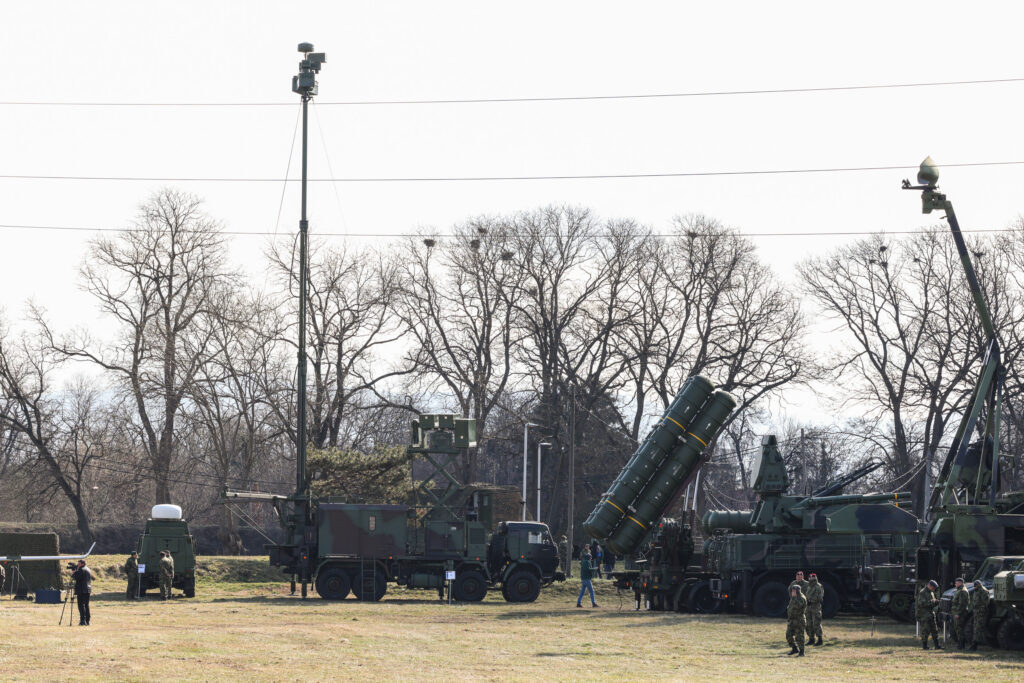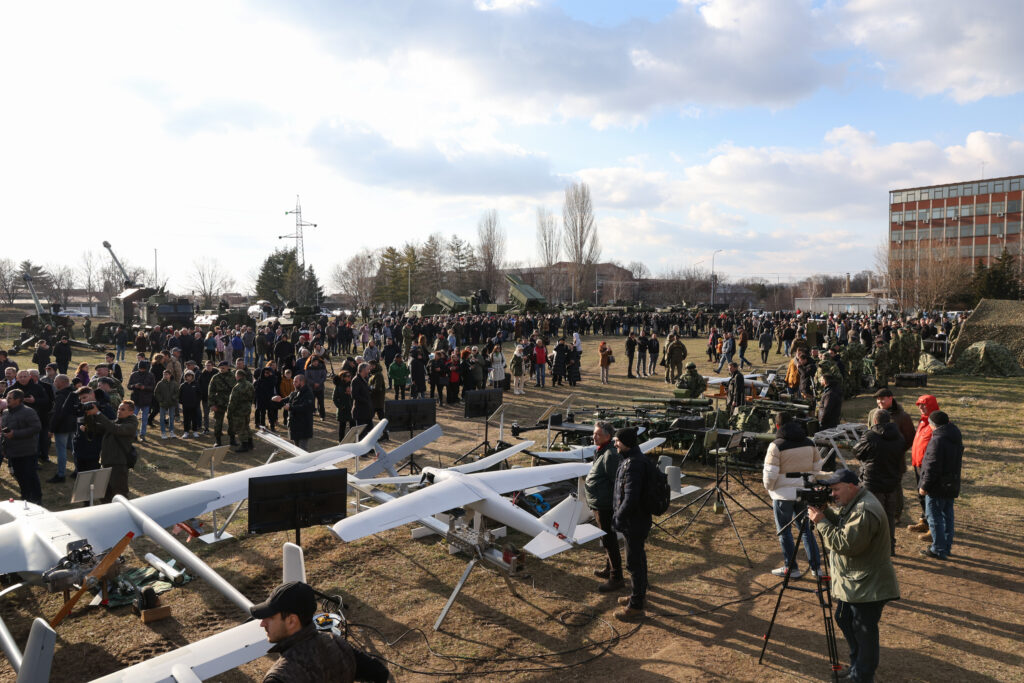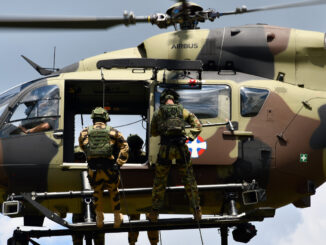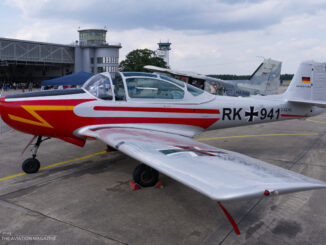 On 14th February 2024, the Serbian Armed Forces for the first time officially disclosed to public its latest acquirement – Repellent electronic warfare system. That Russian-made weapon address the increasing threat from light unmanned aerial vehicles (UAV), including the miniature ones.
On 14th February 2024, the Serbian Armed Forces for the first time officially disclosed to public its latest acquirement – Repellent electronic warfare system. That Russian-made weapon address the increasing threat from light unmanned aerial vehicles (UAV), including the miniature ones.
The latest Serbian military purchase was presented during the public event organized on the occasion of the Statehood Day (Сретење), in Niš, southern part of Serbia. The exhibition was visited by the highest state authorities, including the President of Serbia Aleksandar Vučić, the Deputy Prime Minister and Minister of Defence Miloš Vučević and the Chief of the General Staff of the Serbian Armed Forces, General Milan Mojsilović.
A broad range of the Serbian military equipment was presented during the Statehood Day exhibition in Niš. It included M-84 and T-72 tanks, armoured vehicles Lazar-3 and Miloš, personal carriers, vehicles used by the military police, artillery systems, unmanned aerial vehicles(including the micro ones) and variety of personal equipment.
The celebration was enhanced by flypast of the Serbian Air Force and Air Defence aircraft: MiG-29, Airbus C295, Mi-35 and H145M.
In 2016, the first information about the Russian anti-UAV electronic warfare system Repellent (Комплекс радиоэлектронной борьбы с малоразмерными беспилотными летательными аппаратами ´Репеллент´) were officially disclosed. According to its manufacturer, JSC Scientific-technical centre for electronic warfare (AO Научно-технический центр радиоэлектронной борьбы), the weapon at first provides electronic reconnaissance to detect UAVs, which is based on radio communication and/or data transmission between the aerial vehicle and its command centre. Then, the system supresses all communication channels between the UAV and ground control, as well as satellite navigation systems used by the UAV.

Official data sheet of the Repellent system states the weapon can provide radio reconnaissance and electronic jamming in range of up to 30 kilometres, in 360° evaluation. According to manufacturer, the weapon is able to detect all types of light UAVs including the miniature ones, that are becoming increasingly more popular. However, with the micro-UAVs, effective range of the Repellent may be significantly shorter than the aforementioned maximum.
The first information about acquirement of the Repellent system by Serbia were already disclosed by Vučić in January of 2024. However, the Serbian president did not provide any details about when the order was placed, and when the weapon was delivered.
In previous years, Russia was a significant supplier of weapon systems to Serbia. The deliveries included MiG-29 fighter aircraft, Mi-17 and Mi-35 helicopters, tanks and armoured vehicles, anti-tank missiles and Pantsir-S1 anti-aircraft systems. However, since the beginning of the conflict in Ukraine – until the present acquirement – no further deliveries were executed, including the already ordered equipment. In addition, Serbia increased its purchases of Western-made military equipment, such as H145M helicopters, Airbus C295 transport aircraft and Thales GM-400 Alpha mobile radar systems.
In recent years, Serbian authorities have repeatedly been criticized by the European Union for the country´s military cooperation with Russia and China. Serbia became the first, and currently the only European country to acquire Chinese CH-92A and CH-95 combat UAV (more about that purchase in our article from 2020), as well as HQ-22, long-range anti-aircraft missile system.
Nevertheless, during the military exhibition in Niš, Alexandar Vučić stated that the Serbian military cooperation with China is going to be continued, including purchase of the additional CH-95 UCAVs.

All photos © Министарство одбране Републике Србије / MoD Republic of Serbia. MoD press releases were used.



